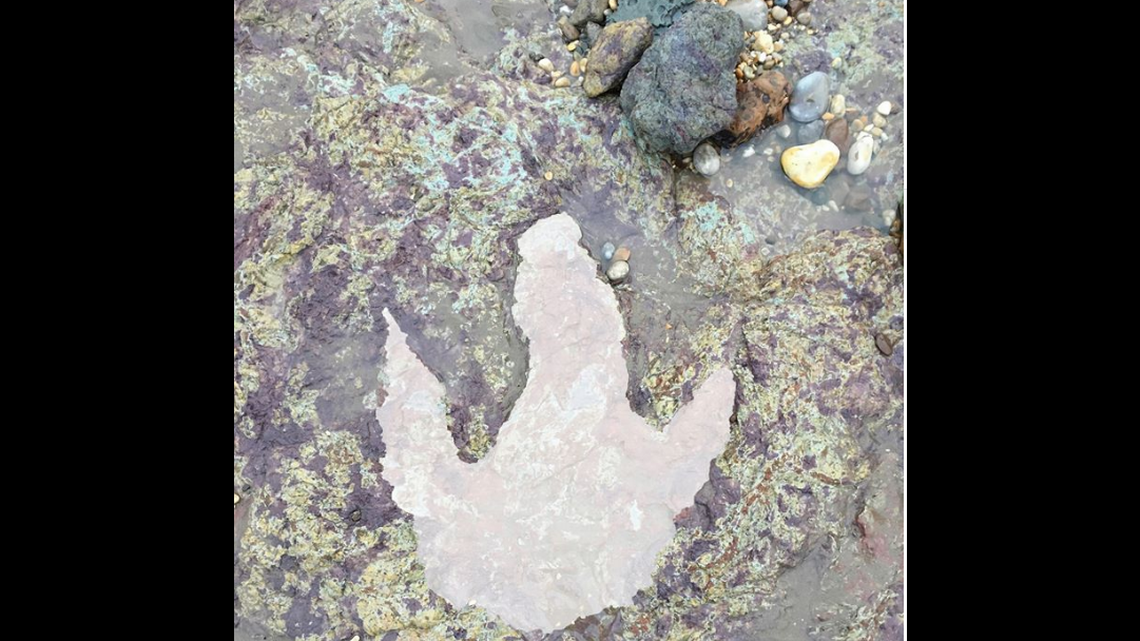130 Million-Year-Old Dinosaur Footprint Found After Storm Shifts Sands on UK Beach

A monstrous three-toed footprint found last week on a British beach is the prehistoric track of a huge carnivorous reptile that died millions of years ago, according to fossil experts.
The print is just under 20 inches long and was discovered on the Isle of Wight after a storm whipped the rocky shore with winds and waves, the Wight Coast Fossils said in a Feb 13 Facebook post.
“All this weather is revealing traces of vanished worlds along our coastline!” the group posted.
“Shifting sands at Sandown Bay revealed this beautiful 130 million-year-old dinosaur track yesterday, preserved in the brightly coloured floodplain clays,” the post said.
Photos shared by the fossil-hunting group show the giant print had a brownish discoloration, making it stand out from the rest of the stone. The group also shared photos of a plaster cast being made to preserve the print.
Wight Coast Fossils says it’s not completely sure what creature made the track, but it could have been either a Neovenator or a Baryonyx, two giant lizards that walked on two legs, had small forearms (like the tyrannosaurs) and ranged in size from 24 to 32 feet, according to the Natural History Museum in London.
A single fossilized claw of a Baryonyx found in the early 1980s measured more than 12 inches in length, the museum reports.
“The mottled clays the footprint is preserved in ... (are) representing an area of boggy over bank marshland that seasonally dried and flooded,” the fossil group posted.
“Our track maker was ... leaving these huge tracks in the boggy soil. Behind the animal lay a range of low forested hills, while ahead lay a flat floodplain landscape dotted with floodplain forests, river channels, and herds of herbivorous dinosaurs,” the group wrote.
Dinosaur footprints have been found before in the island’s Wessex rock formation, “but do not hold up to the forces of erosion for long,” the group wrote.
The easily weathered stone is made up of a series of “alternating beds of clay and sand” that has been dated back 140 million years,” according to Pteros.com.
“Sadly they will typically disappear in a couple of days or weeks, as the tide wears down the soft clays ... an awesome but fleeting glimpse of a time long gone, lying in plain sight,” the fossil group wrote.
Source: www.miamiherald.com/








